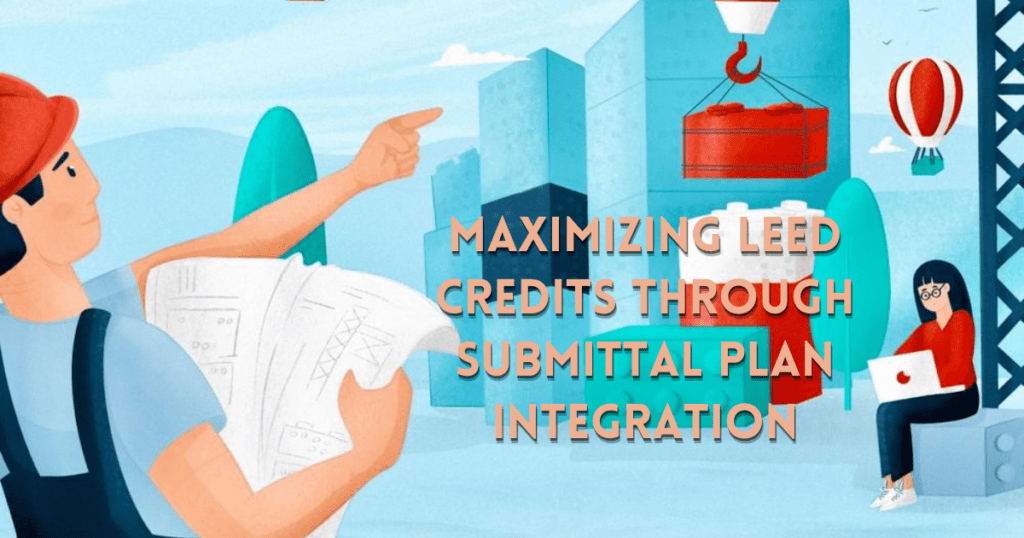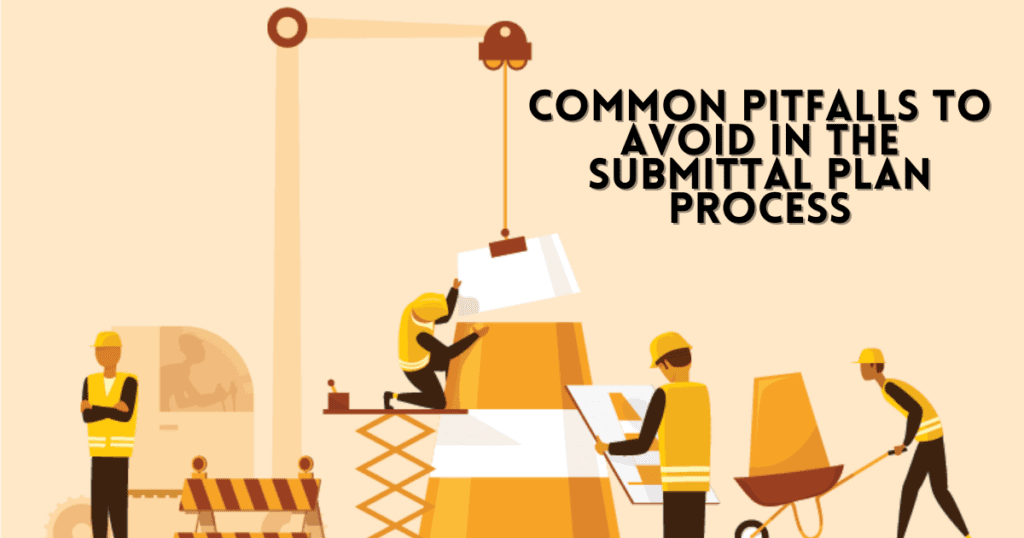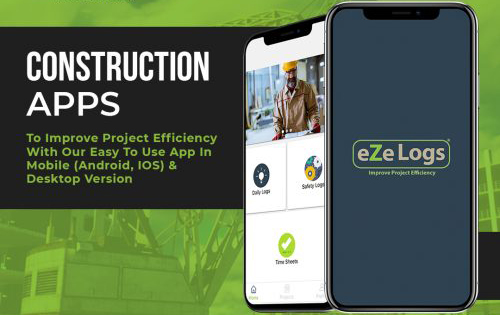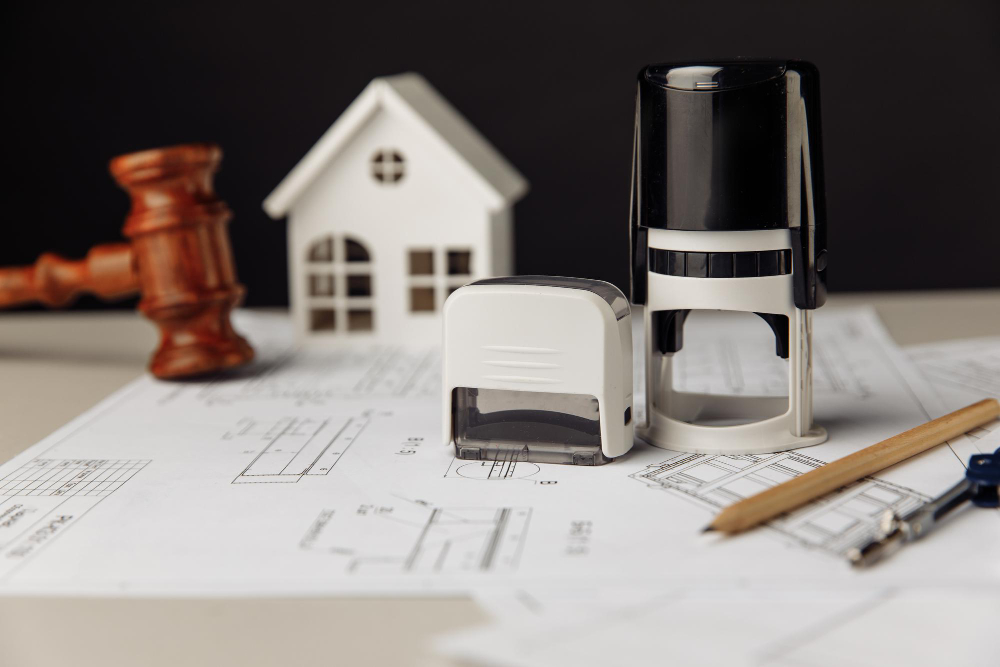Welcome to our guide on maximizing LEED credits through submittal plan integration! LEED, or Leadership in Energy and Environmental Design, is a certification program that recognizes buildings for their sustainability and energy efficiency. It is a globally recognized system for designing, constructing, and operating high-performance, energy-efficient, and sustainable buildings.
One important aspect of achieving LEED certification is earning credits through different sustainability strategies and techniques. These credits can be earned by implementing various strategies, such as using sustainable materials, improving indoor air quality, and reducing water usage. This guide will focus on how to earn credits through your building’s submittal plan.

A submittal plan is a document that outlines the design and construction of your building. It includes information on the materials, systems, and equipment to be used, as well as details on the building’s layout and design. By using construction management software or construction software, it is easy to keep track of the guidelines outlined in the submittal plan, and ensure that your building meets the requirements for LEED certification.
We’ll explain the submittal process and the available credits and share some best practices for creating a comprehensive and compliant submittal plan to help you earn the maximum amount of credits. By using construction management software or construction software, you can easily follow these guidelines, and ensure that your building meets the requirements for LEED certification and earns the maximum amount of credits possible.
Key Takeaways
- LEED certification recognizes buildings for their sustainability and energy efficiency.
- Submittal plans are an important aspect of achieving LEED certification by outlining the design and construction of a building and earning credits.
- It is important to understand the LEED submittal requirements and available credits to create a comprehensive and compliant submittal plan.
- Best practices for submittal plan integration include creating a comprehensive and compliant plan, emphasizing energy efficiency, using sustainable materials, and seeking expert help.
- Common pitfalls to avoid in the submittal plan process include not understanding the requirements and not including all necessary information in the plan.
- By following these guidelines, you can ensure that your building meets the requirements for LEED certification and earns the maximum amount of credits possible.
Use the software to manage whole submittal process
Understanding LEED Submittal Requirements
To maximize the credits you can earn through your building’s submittal plan, it’s important to understand the LEED submittal requirements. The submittal process involves submitting your building’s design and construction plans to the US Green Building Council (USGBC) for review. By using construction software, it is easy to submit your building’s design and construction plans to the USGBC for review. The USGBC will then evaluate your plans to ensure they meet the requirements for LEED certification.

There are a variety of credits available through submittal plan integration, such as credits for sustainable materials, energy efficiency, and indoor air quality. These credits are awarded based on compliance with the submittal requirements. The more credits you earn, the higher the level of LEED certification your building can achieve. By using construction software, you can keep track of the credits available for submittal plan integration, and ensure that your building meets the compliance for those credits.
It’s important to thoroughly understand the submittal requirements to ensure your building meets all the necessary criteria. This includes compliance with the standards set forth by the USGBC and understanding the various credits that can be earned through submittal plan integration and how to achieve them. By using construction software, you can easily keep track of the submittal requirements and understand the available credits.
By understanding the submittal requirements and using construction software, you can create a comprehensive and compliant submittal plan that will increase your chances of earning the maximum amount of credits possible. This will make it more likely that your building will achieve the highest level of LEED certification.
Best Practices for Submittal Plan Integration
When it comes to maximizing LEED credits through submittal plan integration, certain best practices can help increase your chances of success. These best practices help ensure that your building meets the requirements for LEED certification and earns the maximum amount of credits possible.
Tips for creating a comprehensive and compliant submittal plan
When creating a comprehensive and compliant submittal plan, there are a few essential tips to keep in mind:
- Understand the LEED submittal requirements: Before you start creating your submittal plan, ensure you have a thorough understanding of the requirements set forth by the USGBC. This will ensure that your project meets all the necessary criteria for LEED certification.
- Include all necessary information: Make sure your submittal plan includes all the essential information about your building’s design and construction, such as materials, systems, and equipment to be used. Also, have details about the building’s layout and design.
- Emphasize on energy-efficiency: Highlight energy-efficient features and systems in your building, such as energy-efficient lighting and HVAC systems, as these can earn you a significant number of credits.
- Use sustainable materials: Use sustainable materials in your building, such as recycled or locally sourced materials, as these can earn you credits.
- Get expert help: If you need help creating a comprehensive and compliant submittal plan, consider getting help from a LEED-accredited professional. They can provide guidance and ensure that your project meets all the requirements.
By following these tips, you can create a comprehensive and compliant submittal plan that increases your chances of earning the maximum amount of credits possible and achieving LEED certification.
Strategies for integrating submittal plans with other LEED credits

Several strategies you can use to integrate your submittal plan with other LEED credits can help you earn more credits and increase your chances of achieving LEED certification. Some strategies include:
- Coordinating with other teams: Coordinating with other groups, such as the energy and water efficiency teams, can help you identify opportunities to earn credits through submittal plan integration.
- Leveraging existing systems: Leverage existing systems, such as energy-efficient lighting and HVAC systems, to earn credits in multiple categories.
- Using sustainable materials: Use sustainable materials, such as recycled or locally sourced materials, in your building to earn credits in multiple categories.
- Incorporating indoor air quality: Incorporating indoor air quality measures, such as proper ventilation and filtration, can earn you credits in multiple categories.
- Implementing a commissioning process: A commissioning process, which involves verifying and documenting that your building’s systems are operating as intended, can earn you credits in multiple categories.
By integrating your submittal plan with other LEED credits, you can earn more credits and increase your chances of achieving LEED certification. Additionally, incorporating these elements can create a holistic approach towards sustainability and environmentally friendly buildings.
Common pitfalls to avoid in the submittal plan process

The submittal plan process can be complex. There are several common pitfalls to avoid to increase your chances of earning the maximum amount of credits possible and achieving LEED certification. Some pitfalls include:
- Need to understand the submittal requirements: Not thoroughly understanding the requirements set forth by the USGBC can lead to non-compliance and a lower chance of earning credits.
- Not including all necessary information: Failing to include all required information in your submittal plan can result in a lack of compliance and a lower chance of earning credits.
- Not emphasizing energy efficiency: Please highlight energy-efficient features and systems in your building to ensure a higher chance of earning credits in the energy and atmosphere category.
- Not using sustainable materials: Failing to use sustainable materials in your building can result in a lower chance of earning credits in the materials and resources category.
- Not getting expert help: Not getting help from a LEED-accredited professional can result in a lack of compliance and a lower chance of earning credits.
By avoiding these pitfalls, you can increase your chances of earning the maximum amount of credits possible and achieving LEED certification.
The bottom line
In conclusion, achieving LEED certification through submittal plan integration is a complex process that requires a thorough understanding of the submittal requirements and best practices for creating a comprehensive and compliant submittal plan.
As a construction industry professional, you can increase your chances of achieving LEED certification by understanding the submittal requirements and earning credits through sustainable materials, energy efficiency, and indoor air quality.
By utilizing construction management software and Project management strategies, you can keep track of the guidelines outlined in the submittal plan and identify opportunities to earn credits through waste management integration.
By following the strategies provided in this guide, you will be well on your way to creating a sustainable and energy-efficient building that earns LEED certification. It is crucial to avoid common pitfalls, such as not understanding the submittal requirements, not including all necessary information in your submittal plan and not utilizing construction management software and project management strategies.
If you still need to figure out how to create a comprehensive and compliant submittal plan, consider getting help from a LEED-accredited professional or a construction management expert. They can provide guidance and ensure that your project meets all the requirements.
We hope this guide has helped provide you with the information and strategies you need to achieve LEED certification through submittal plan integration.
Good luck on your journey toward a more sustainable and energy-efficient building! By implementing these strategies, you as a contractor will be in a better position to provide a sustainable and energy-efficient building for the benefit of the environment and the community.


